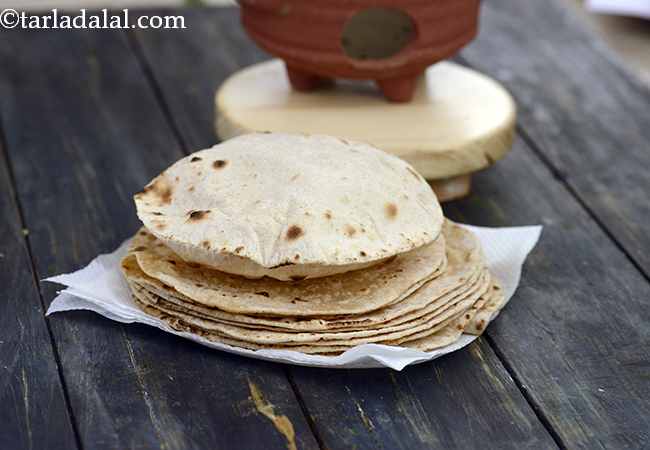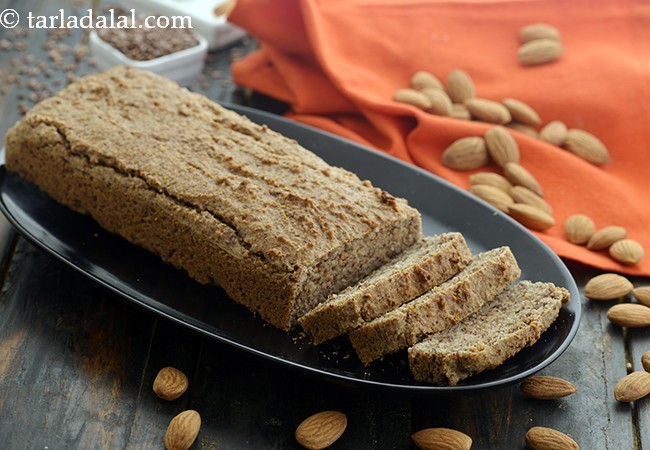Pav Bhaji recipe serves 4.
Calories of Pav Bhaji 406 calories for 1 plate of Pav Bhaji (Mumbai Roadside Recipes), Cholesterol 30 mg, Carbohydrates 58.6g, Protein 9.5g, Fat 14.3g. Find how much fibre, iron, calcium, zinc, magnesium, phosphorus, sodium, potassium, folic acid is present in Pav Bhaji
Click here to view. Pav Bhaji recipe. Pav bhaji | mumbai roadside pav bhaji | pav bhaji without pressure cooker.
Mumbai roadside pav bhaji is so popular, that it's available all over Mumbai. Each small lane leading to the railways stations has its own pav bhaji seller on a cart with a large tava mounted on it. At any point, there is plenty of pav bhaji ready to serve on one side of the tava and on the other side is hot ladi pav with loads of butter being cooked.
Served on a steel plate with 2 slots for bread and onions, the boiling hot mumbai roadside pav bhaji is topped with loads of butter, chopped onions and a slice of lemon accompanied with ladi pav.
Making pav bhaji is lots of fun and you can make your own version. Pav bhaji is made from a bhajji which always has potatoes, tomatoes, onions, green peas as the main vegetables. The main spice used in pav bhaji is pav bhaji masala which lends a spicy flavour, rich colour and enticing aroma.
Pav Bhaji is more than a mere snack! it’s a quick meal that can be grabbed on the go – since large potions of the bhaji are made in advance and simply reheated with a few spices before serving.
You just need to wait till the pav is toasted to perfection with oodles of butter! Hmm, top with the raw onions and tomatoes, squeeze a tad of lemon atop the bhaji, and forget yourself!
Aside from
pav bhaji, we have other variations like
jain pav bhaji,
khada pav bhaji,
pressure cooker pav bhaji and
pav bhaji made with doodhi.
You can also make this popular Mumbai
Ladi Pav at home and cook up a variety of
recipes using ladi pav like
Vada Pav,
Dabeli,
Kaanda Bhajji Pav,
Ladi Pav Bhaji Toasts and many more.
Pav Bhaji is more than a snack. It's a quick meal than can be grabbed on the road. Travel to any part of Mumbai, India and you will see this Mumbai street food. Street vendords make the bhaji in advance and reheat it to serve it on peak hours with some hot pav ladden with butter.
Is Pav Bhaji healthy?
No, pav bhaji (Mumbai Roadside food) is not healthy, but you can make modifications to the recipe and yet enjoy it. Made from pav, butter, potatoes, cauliflower, green peas, carrots, onions, capsicum and tomatoes.
Let's understand the Ingredients.
What's good.
1. Green Peas : Green peas are good for weight loss, good source of vegetarian protein, has insoluble fibre to relieve constipation. Legumes like green peas, cow peas, mung, chick peas and kidney beans have a cholesterol lowering effect. Green Peas are rich in Vitamin K which aids in bone metabolism. Is green peas good for diabetics and see full benefits of green peas.
2. Onions : Yes, its a great antioxidant. The phytochemical present in onions along with their Vitamin C help boost your immunity. The chromium in onions help regulate your blood pressure. The sulphur in the onion which brings you tears is actually good for your eyes. Raw onions keep your heart healthy and see here for total benefits of onions.
3. Tomatoes : Tomatoes are extremely rich source of Lycopene. Tomatoes are a powerful antioxidant, super rich in Vitamin C, good for heart. Tomatoes are a Pregnant women's friend and are rich in Folate or Folic Acid which helps your body to produce and maintain new cells, especially red blood cells. Read about 13 amazing benefits of tomatoes.
4. Cauliflower : Cauliflower is extremely low in carbs and therefore does not raise blood glucose levels. One cup Cauliflower provides you 100% off your daily recommended allowance of Vitamin C. Rich in Antioxidant. Being rich in Indoles, Cauliflower and other Cruciferous Vegetables like broccoli, kale, radish, brussel sprouts, red cabbage) maintain Estrogen balances which is crucial for women. Read here for detailed benefits of cauliflower.
5. Carrots : Carrots have the nutrient Beta Carotene which is a form of Vitamin A, helps prevent deterioration of the eye as one gets older and prevents night blindness. Carrot is great for the eyes.They relieve constipation, lower blood pressure, have fibre and lower cholesterol. Read the 11 super benefiits of carrots and why to include in your daily diet.
6. Butter : Butter contains 80% fats and it comprises of many types of fatty acids. Butter has short chain fatty acids and medium chain fatty acids which are broken down and absorbed into the body directly and go straight to the liver and get converted to fuel to be used by the muscles. Due to this anti-inflammatory effect, it is said to have a positive effect in treating Irritable Bowel Syndrome (IBS). Recent research shows that small amounts of butter has positive effects on heart health. So diabetics too can have small quantity of butter and balance it with other types of fats they consume. A tbsp. of butter fulfils 8% of your days requirement of vitamin A. This Vitamin A is a powerful antioxidant which is essential for glowing skin health and immune function. We suggest you read about butter the super food.
7. Capsicum (Bell Peppers) : Rich in vitamin C, capsicum protect and maintain the lining of the heart. Low glycemic index (40) colourful capsicum are immune boosters. Colourful capsicums are not only visually appealing but also good for your eyes too, as they contain antioxidant Lutein, which protects the eye from cataracts and degeneration of the eye. Capsicum is high in Folate or folic acid, which is important for rapid growth and multiplication of red blood cells and white blood cells in the bone marrow. See detailed benefits of capsicum.
8. Coriander (kothmir, dhania) : Coriander is a fresh herb often used as a flavour enhancer in Indian cooking. It is mainly used as a garnish. This is the best way to use it - no cooking. This preserves its vitamin C content which helps to build our immunity and bring that sparkle to the skin. The antioxidants vitamin A, vitamin C and the quercetin present in coriander works towards strengthening our immune system. Coriander is a fairly good source of iron and folate – the 2 nutrient which help in the production and maintenance of red blood cells in our blood. Good for reducing cholesterol and good for diabetics. Read 9 benefits of coriander to understand details.
9. Lemon, Lemon Juice : Lemon is a very good source of Vitamin C and thus helps in the production of white blood cells and antibodies in the blood which attacks invading microorganisms, prevents infection and builds immunity. Therefore, Lemon juice is given to prevent common cold. The ascorbic acid in lemon juice helps in absorption of iron from the food. So if you’re iron deficient or have anaemia squeeze a lemon on iron rich recipes. See detailed benefits of lemon, lemon juice.
What's bad.
1. Plain flour used to make Pav : This recipe uses plain flour or maida which is refined carb not suitable for healthy lifestyle. Maida consumption in any food should be totally avoided or just a little bit of usage as any consumption of this will cause a larger spike in blood levels which is not good for diabetics, heart patients. Read is maida good for you to understand fully.
2. Potatoes (Aloo) : Potatoes being high in simple carbohydrates will lead to weight gain and are not good for people with diabetes, heart problem and obesity. Potatoes are recommended for malnourished children and people with low weight. See full details on why potatoes are bad for you.
3. Vegetable Oils : To some vegetable oil is only soyabean oil, while some promote it as a mix of oils like soyabean, canola, sunflower, corn and other omega-6 rich oils. These are often cheaper options than many oils, but they are highly processed oils. They are undoubtedly not to be reached out for, whether you are looking for salad dressings, sautéing or cooking. The 5 best oils used in cooking are olive oil (low temperature short time cooking), avocado oil, canola oil, coconut oil and peanut oil. You must read the super article to find the facts of which oil is the healthiest avoid vegetable oil.
Can diabetics, heart patients and over weight individuals have Pav Bhaji?
No, this recipe is not good for diabetics, heart and weight loss. BUT you can make modifications to the recipe and still enjoy it. See below.
Can healthy individuals have Pav Bhaji?
No.
How do you make this pav bhaji recipe (Mumbai roadside food) healthy for diabetics, cardiac and weight loss?
Well, you need to make a lot of changes. Drop the bread or pav. Replace with a fibre rich whole wheat roti. Sorry, say bye to the traditional bread as there is only plain flour in it. With the bread goes the butter you apply on the bread. So now we are far healthier.

Roti (How To Make Soft Roti Or Phulka Or Chapati)
We suggest you try homemade almond bread made without eggs with your pavbhaji.

Almond Bread, Homemade Almond Bread Without Eggs
The next step is to drop the potatoes as they are not healthy as explained earlier. If you need to put in weight, then keep the potatoes. You can replace the potatoes with doodhi or try the recipe from pav bhaji made with doodhi. But remember no pav.
Pav Bhaji is high in
1. Vitamin C : Vitamin C is a great defence against coughs and colds.
2. Vitamin B1 : Vitamin B1 protects nerves, helps in carbohydrate metabolism, prevents heart diseases and helps produce red blood cells.
Note : a recipe is deemed high in a Vitamin or mineral if it meets 20% and above the recommended daily allowance based on a 2,000 calorie diet.
How to burn 401 calories that come from one serving of Pav Bhaji?
Walking (6 kmph) = 2 hrs
Running (11 kmph) = 40 mins
Cycling (30 kmph) = 53 mins
Swimming (2 kmph) = 1 hr 9 mins
Note: These values are approximate and calorie burning differs in each individual.